Hiking from Keage to Mt. Daimonji and Down to Yamashina –
A Snowy Kyoto Trail Adventure
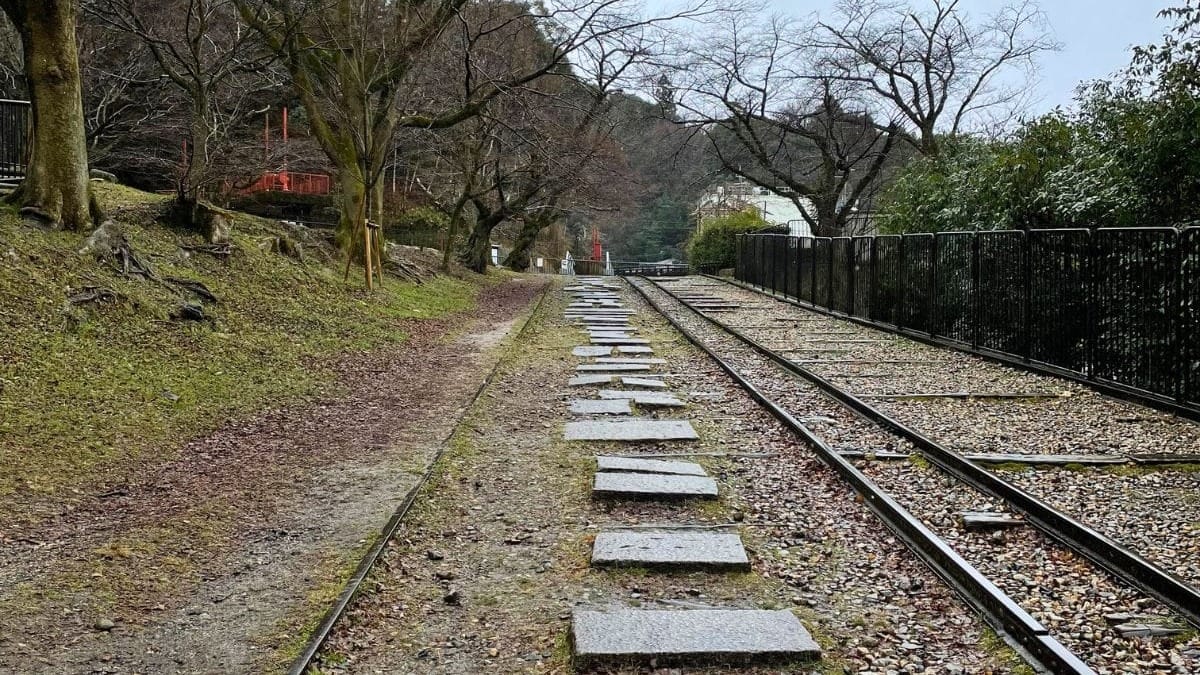
Introduction:
It’s already mid-March, but in 2025, Kyoto still feels like winter. The wind is cold, the sky is grey, and rain is in the forecast.
Still, I put on my hiking shoes and head out to Keage (蹴上), planning a quiet walk up Mt. Daimonji (大文字山), and down into Yamashina (山科).
It might not be the perfect day for hiking, but sometimes, walking in calm, rainy weather brings a special kind of peace to the heart.
The Route: From Keage to Mt. Daimonji
I started at Keage’s famous “crank” of the Lake Biwa Canal (疎水, sosui). This beautiful man-made waterway connects Lake Biwa to Kyoto, and the stone-lined path is part of the Kyoto Trail.

Soon, I passed by Hinata Shrine (日向神宮) and a mysterious little cave-like spot called Amano-Iwato (天の岩戸). This place is named after a famous Shinto legend: the story of the sun goddess Amaterasu(天照大神). According to the myth, she became upset with her brother’s violent behavior and hid herself inside a cave, Amano-Iwato, plunging the world into darkness. The other gods gathered and performed a loud, joyful dance outside the cave to make her curious. When she peeked out, they quickly pulled the rock door away, bringing light back to the world.
For some reason, it reminded me of a Greek myth I read long ago. Different culture, different time and place—but somehow, the story felt similar. That kind of connection is always interesting to me.
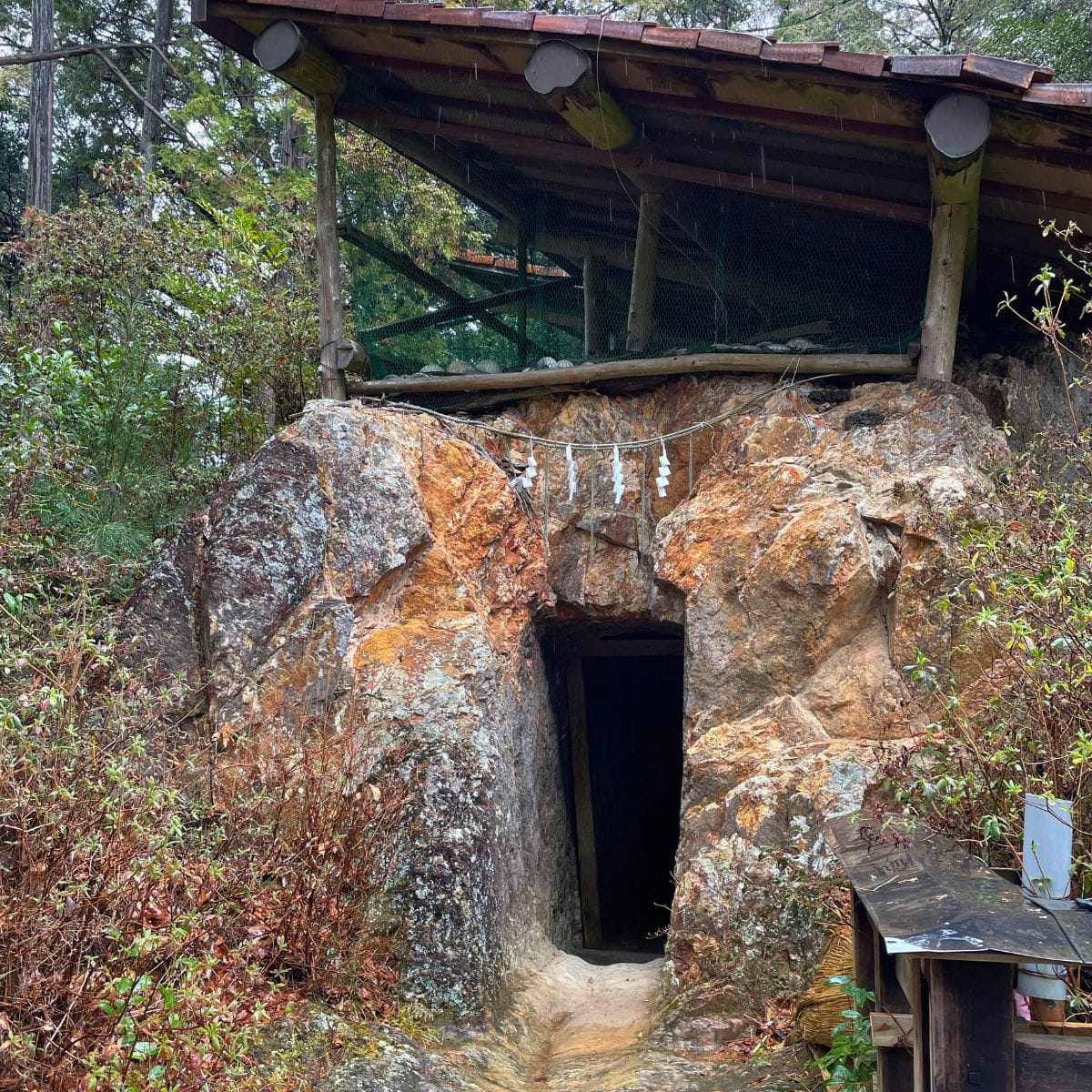
As I climbed up from there, the city of Yamashina slowly came into view behind me. The higher I went, the colder it became. Rain quietly turned into snow—not heavy, but enough to settle in shaded parts of the trail. It was a weekday, so I met almost no one. Just a few dedicated trail runners passed by. I quietly admired their energy and focus as they disappeared into the trees.

Quiet Moments at the Top
The summit of Mt. Daimonji isn’t very high—just 466 meters—but the view is wide and beautiful. From here, I could see the whole city of Kyoto spread out under a cloudy sky.
There are several benches and tables at the top. On a sunny weekend, this place is usually full of hikers—chatting, cooking lunch, or just resting. But today? Nobody. Just me, my son, the wind, and the snow.
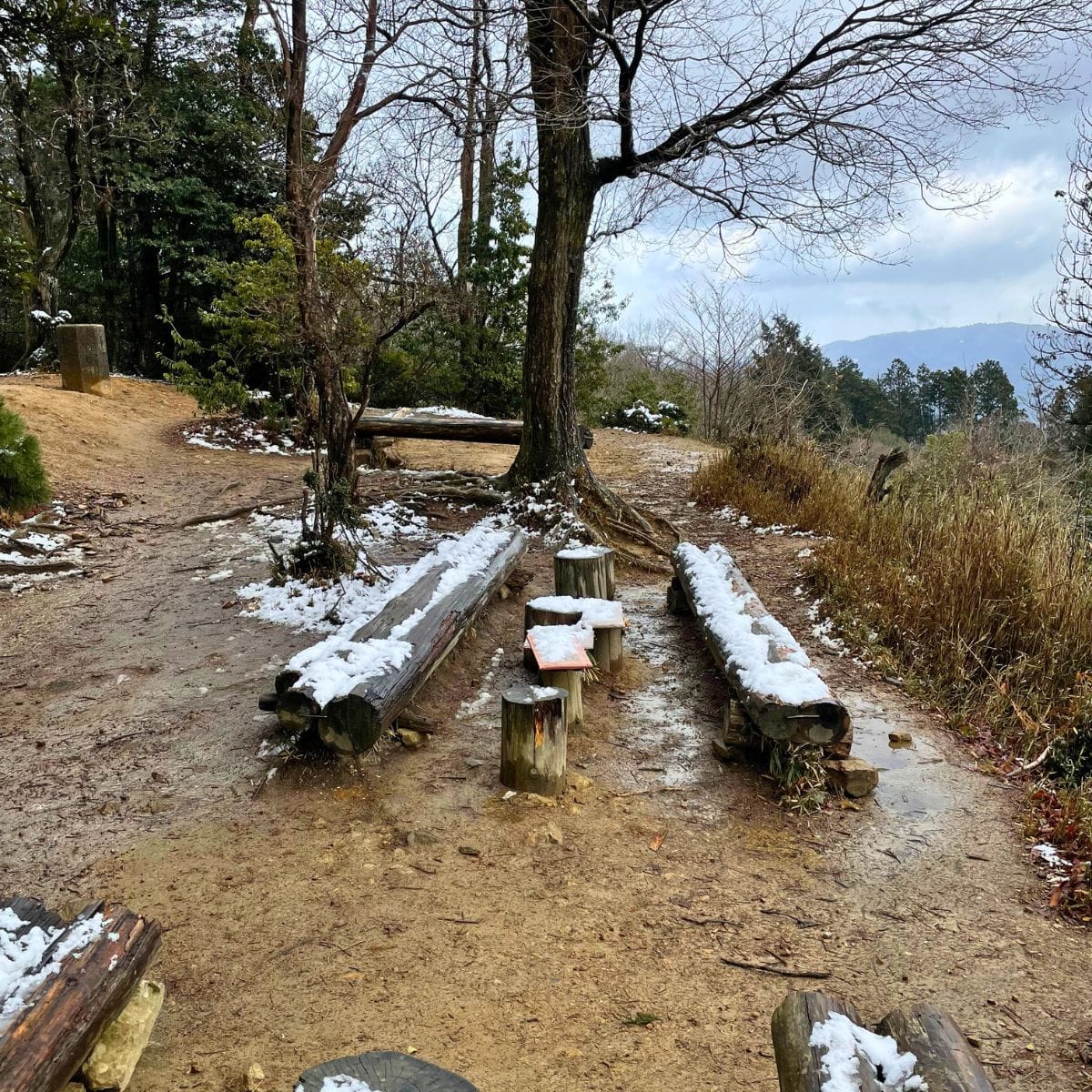
The morning weather forecast said the rain would stop by the afternoon. But as we reached the summit, it turned into snow instead—and it was colder than I had imagined.
I set up my small stove and started to boil water. My fingers were freezing while I waited. We made freeze-dried risotto and ate it while it was still steaming hot. We didn’t speak a word—we just focused on the warmth and the food, shoveling it into our mouths in silence.
As soon as we finished, we looked at each other and both laughed. No words were needed. That small moment said everything.
After the meal, I brewed some coffee while my son quietly looked out over the city. We didn’t say much, but that silence felt full—not empty. These moments, when time slows down and the world feels far away, are what I love most about hiking.
Descent to the Fire Bed and Beyond
From the top, I walked down to the famous fire bed (火床) of the Daimonji bonfire. This is the place where, every August during the Obon Festival, the giant 大 character is lit up to guide spirits back to the other world.
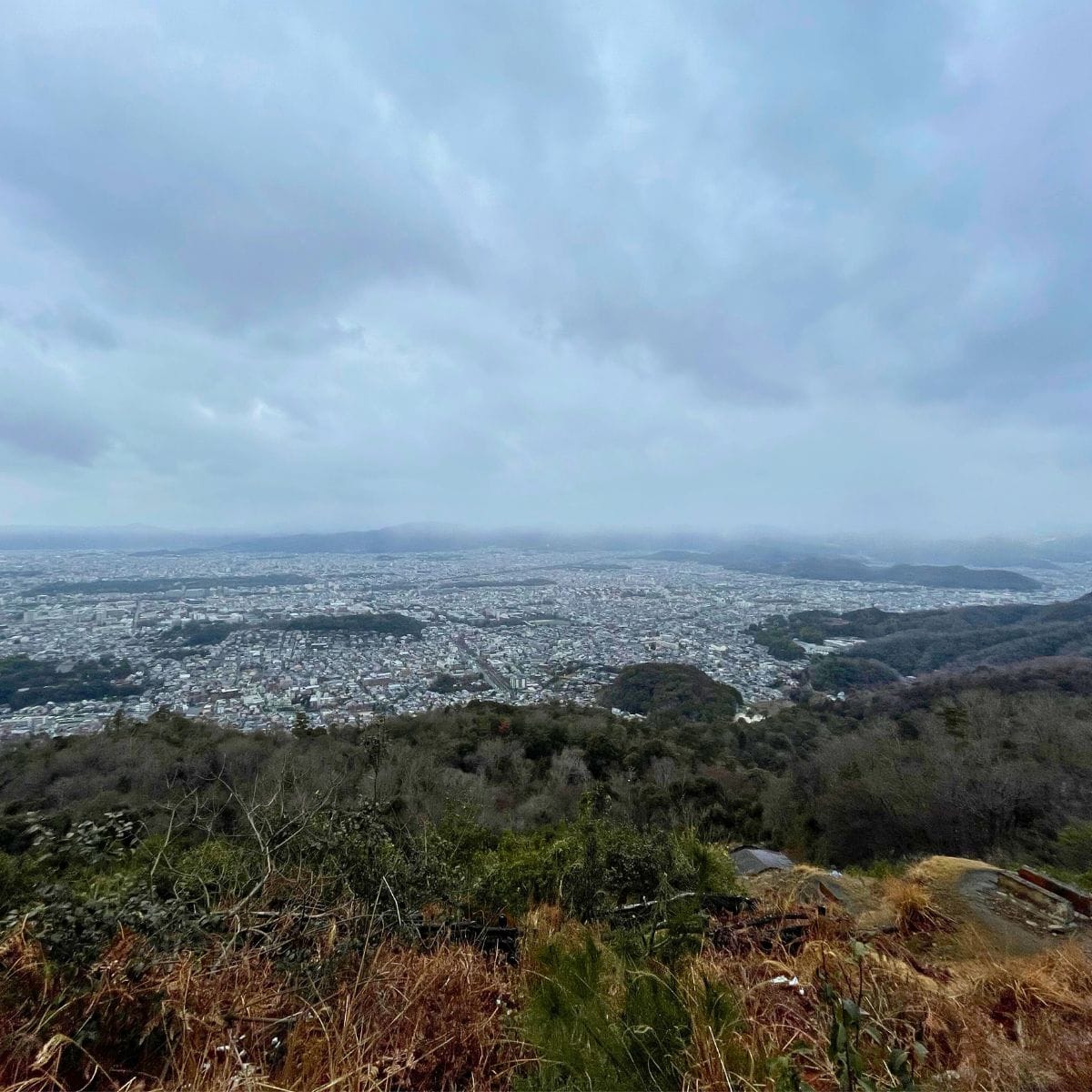
The character 大 (dai) means “big” or “great,” and it is one of five large symbols lit on mountains surrounding Kyoto. Together, this event is called Gozan no Okuribi (五山の送り火), or “Five Mountain Send-Off Fires.” It’s a beautiful and spiritual tradition that marks the end of Obon—a time when the souls of ancestors are believed to return home. The fires help send them back peacefully, with light and gratitude.
The path down from the fire bed is well-maintained with stone steps—but those steps can be tough on the knees. Be careful.
Most hikers go down this way and reach Ginkaku-ji (銀閣寺, the Silver Pavilion). If you’ve never visited it, this is a great route to combine hiking with sightseeing. From Keage to Ginkaku-ji via Mt. Daimonji takes around 3 hours.
But this time, I didn’t take the common route.
A Quiet Ridge and a Snowy Descent to Yamashina
Instead of taking the common route down to Ginkaku-ji, I returned to the summit of Daimonji and headed east. My next goal was Nyoigatake (如意ヶ岳), another mountain on the Kyoto Trail. It marks the border with Shiga Prefecture.
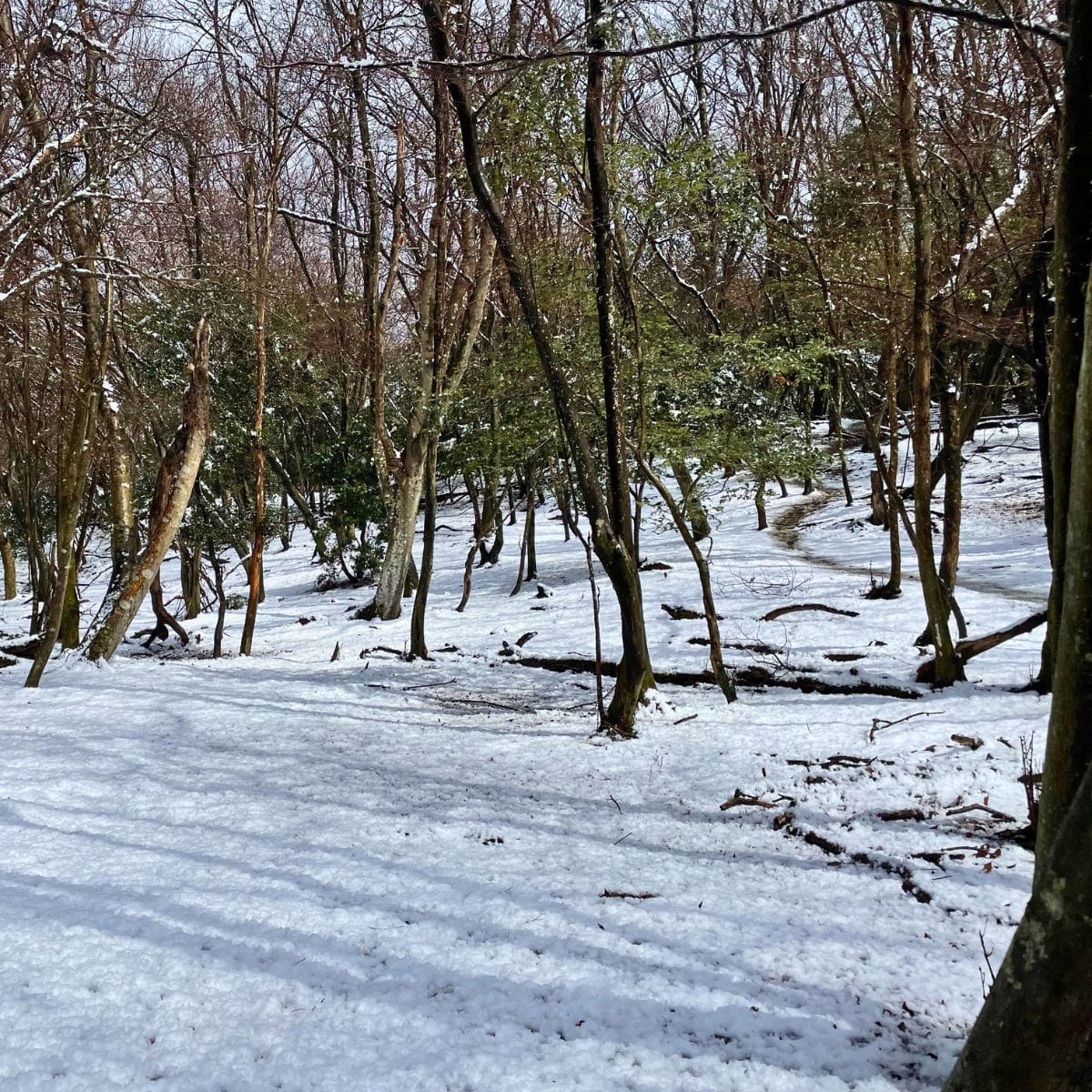
But before reaching the peak, I turned south onto a smaller trail that led toward Yamashina. I soon realized that nobody had walked this path today—there were no footprints at all in the fresh snow.
After walking along the quiet ridge-line for a while, I reached a row of tall power lines. The trail here seemed to be a service path used for power line maintenance. In some parts, it was very steep and quite slippery. I wouldn’t recommend this route for casual hikers or for anyone without proper hiking boots.

At one point, I came to a narrow stream. A simple log bridge crossed it, but the surface was wet and looked dangerously slick. I gave up on the bridge and stepped carefully through the stream at a shallow point instead. My feet got wet, but it felt safer that way.
Eventually, the trail led me to the foot of the mountain near Bishamon-do Temple (毘沙門堂), a quiet spot known for its beautiful gardens—especially during the autumn season. From there, it’s just a 10-minute walk to Yamashina Station.

Practical Tips
•Time: The full hike from Keage to Yamashina via Daimonji takes around 4 to 5 hours depending on your pace.
•Trail Markers: The Kyoto Trail is well-marked, but there are many forks. Always look carefully for signs. If you get confused, don’t hesitate to ask other hikers.
•Offline Maps: I recommend using a GPS map that works offline. It helps a lot in areas with no signal.
•Weather Gear: You don’t need fancy Gore-Tex jackets for Kyoto’s nearby mountains. If you know it will rain, a small folding umbrella is cheap, light, and often better than expensive gear.
•Food and Drink: Bringing food and a warm drink changes the whole hiking experience, especially in winter.
Final Thoughts
Usually, when I see rain in the forecast, I cancel my hiking plans. But this time, I decided to trust the weather report that said it would clear up in the afternoon.
In the end, it didn’t. It rained all day, and the unexpected cold even brought snow to the mountaintop. It was tougher than I expected.
But walking slowly through the quiet forest—just the two of us, my son and I—became a rare and special experience.That’s the beauty of nature. Even when you go to the same place, it shows a different face each time. Weather, season, light, sound—everything changes.
This hike reminded me that we shouldn’t avoid going out just because the conditions seem less than perfect. Even a familiar trail can offer new discoveries when visited at a different time. And sometimes, those unplanned moments become the most memorable.
Next time you’re in Kyoto and want a peaceful but not too difficult hike, consider starting from Keage. You may even catch some cherry blossoms along the canal in spring.
Stay warm and walk safe.

